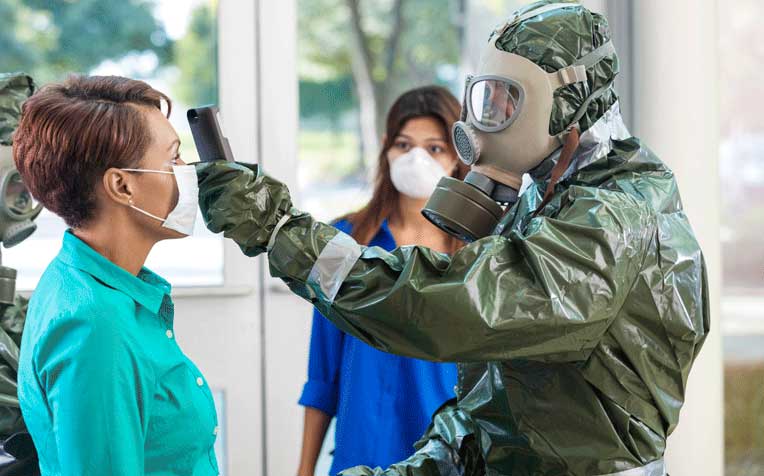
Ebola was first reported in central and west Africa in 1976.
What is Ebola and how is it spread?
Ebola virus disease (EVD) formerly known as Ebola haemorrhagic fever, is a severe but rare disease, caused by a virus of the Filovirus family. It is thought to be a zoonotic infection (animal to human transmission) and can cause disease in humans and other primates, e.g. bats, chimpanzees and forest antelopes.
Transmission is via direct contact with body fluids (blood, urine, faeces, saliva, semen, vomit, etc.) and tissues of infected humans or wild animals.
The Ebola virus can also be transmitted through contact with contaminated objects such as needles (lab accidents), soiled clothing, infected animals, and from the dead body of an Ebola patient during burial ceremonies. However, the virus is not airborne, unless aerosols are created; direct contact is required for transmission.
The ebola virus disease (EVD) was first reported in West and Central Africa in 1976. There have been sporadic outbreaks since, culminating in the ongoing biggest outbreak to date, in West Africa, affecting several countries, namely Guinea, Liberia, Sierra Leone, and cases reported in Nigeria. Reports from MOH/WHO are constantly being updated. Because of global travel, all countries are now on high alert, to be ready for any suspected cases.
Ebola symptoms
The incubation period, or the period between exposure to infection and the onset of symptoms, varies from 2 to 21 days.
Early Ebola symptoms are non-specific and include the following:
- Sudden onset of illness
- Fever
- Intense weakness
- Muscle and joint pain
- Headache
- Sore throat
Subsequently, the patient may develop more severe Ebola symptoms such as:
- Vomiting
- Diarrhoea
- Rash
- Stomach pain
- Red eyes
- Impaired kidney and liver function
- Internal and external bleeding
“Patients become contagious only when they begin to show symptoms,” says Dr Claire Thomas, Senior Consultant, Department of Infectious Diseases, Singapore General Hospital (SGH), a member of the SingHealth group.
“Healthcare workers, family members and friends in close contact with Ebola patients are at the highest risk of getting infected. The key thing is to think of EVD in any patient who has a fever, within 21 days of travelling to the endemic area, or who has been in contact with a known or suspected case,” she adds.
Ebola virus disease is difficult to diagnose in the early stages since its symptoms mimic other conditions. If the disease is suspected, urgent laboratory tests are carried out to confirm the diagnosis. It is important for the suspected Ebola patient to be isolated and healthcare workers to be careful in handling samples for testing.
Ebola treatment
There is no specific treatment for Ebola virus disease, but new vaccines and potential new drugs are being tested. Strict hospital infection control procedures are implemented, and patients are treated for their symptoms, with other diagnoses such as malaria and sepsis being considered. They receive supportive therapy, including intensive care if needed.
Precautions against Ebola virus if travelling to affected areas
The Singapore Ministry of Health cautions the public to avoid travel to affected areas and to take the necessary precautions to avoid Ebola infection if travel is unavoidable.
- Wash hands frequently, e.g. after going to the toilet, before eating food, or whenever hands are soiled.
- Avoid direct contact with blood, secretions or other body fluids of infected humans and animals.
- Avoid objects and environments that have become contaminated by infected humans and animals.
- Avoid participating in burial ceremonies which require direct contact with the body of an infected person.
- Avoid contact with wild animals, including bats, monkeys, apes, chimpanzees and gorillas (alive or dead), including their raw or undercooked meat.
Returning travellers from affected areas or travellers who suspect they have been exposed to the Ebola virus should seek immediate medical attention, bearing in mind the incubation period which can last up to three weeks.
Ref: N18
Contributed by
















 Get it on Google Play
Get it on Google Play